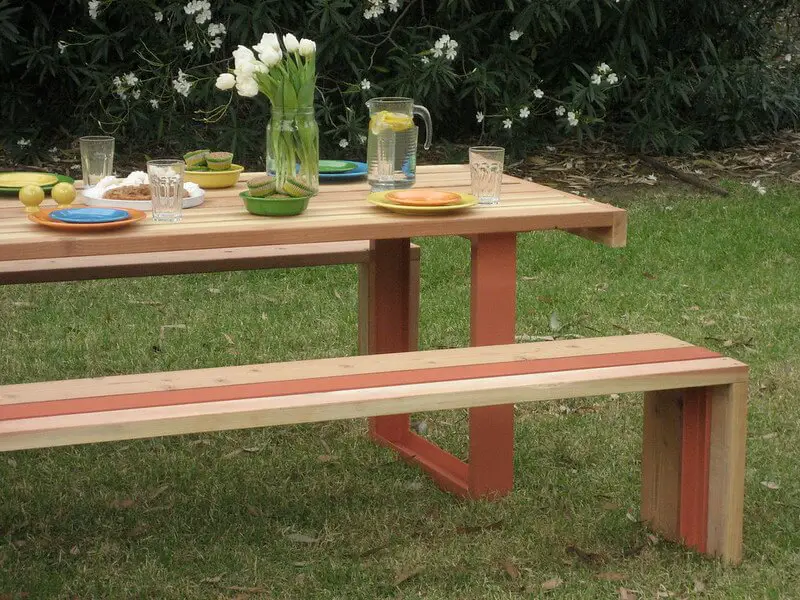When searching for the best wood for outdoor projects, durability is one of the factors that woodworkers think of most. However, other factors such as the appearance of wood should be considered when it comes to outdoor furniture.
You see, a piece of outdoor furniture adds to the aesthetics of your home. Thus, the wood you choose should be attractive to the eyes. It should also have the ability to withstand outdoor elements.
Below are the five best woods for an outdoor table.
Best Wood for Outdoor Table
Teak
| Characteristic | Score |
|---|---|
| Strength | Very strong |
| Durability | High |
| Rot and insect resistance | Very resistant |
| Weather resistance | Very resistant |
| Cost | Most expensive |
Teak can weigh up to 43 pounds per square foot cubed. It’s one of the strongest hardwoods available in the markets today. Teak is also very durable; its strength enables it to resist the wear and tear that most woods used for outdoor furniture undergo.
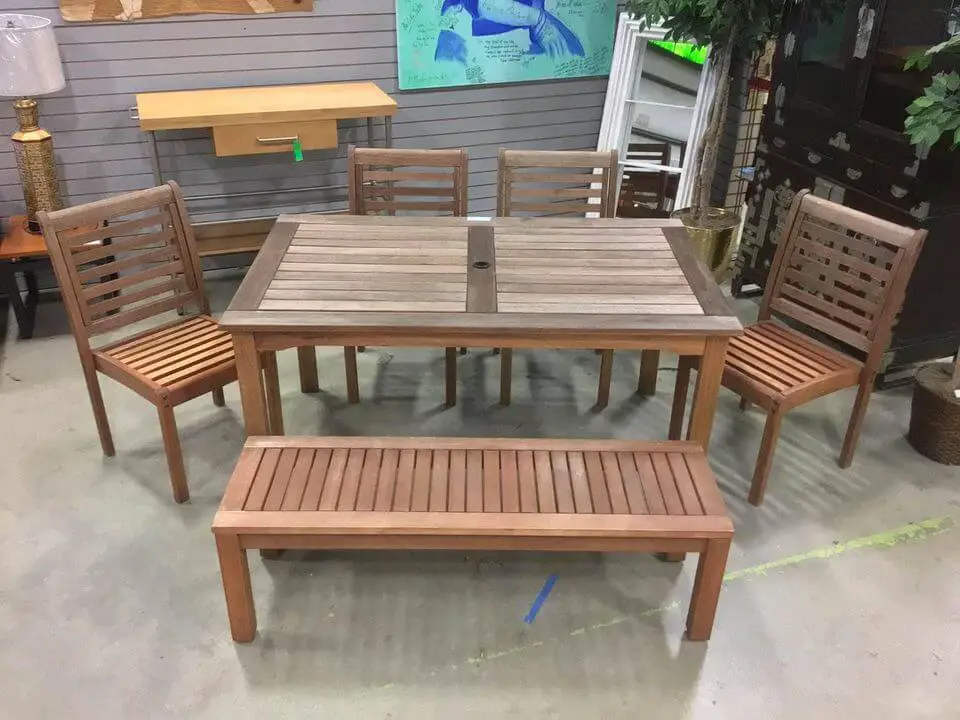
Outdoor furniture made from teak is weather resistant. The high concentration of natural oils in teak wood makes it more impervious to water than other woods such as cedar. Natural oils also play an essential part in helping the wood resist rot and insect attack. All these make teak the best wood for outdoor tables.
However, teak is the most expensive wood among the woods discussed in this article. Check out more good woods for an outdoor table below.
Shorea
| Characteristic | Score |
|---|---|
| Strength | Very strong |
| Durability | High |
| Rot and insect resistance | Very resistant |
| Weather resistance | Very resistant |
| Cost | More affordable when compared to teak |
The characteristics of Shorea are very similar to those of teak. It’s very strong and weighs about 46 pounds per square foot cubed. Shorea is also very durable. In the past, Teak and Shorea were used in shipbuilding due to their durability.
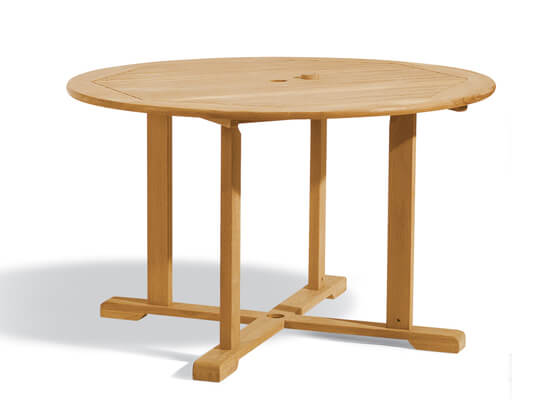
The high concentration of natural oils in Shorea makes it water resistant. They also help the wood stay resistant to insect infestation.
Although Shorea has similar characteristics to teak, it’s more affordable. This may be since it’s more available than teak.
Ipe
| Characteristic | Score |
|---|---|
| Strength | Strong |
| Durability | High |
| Rot and insect resistance | Very resistant |
| Weather resistance | Very resistant |
| Cost | More affordable compared to teak. |
Ipe wood one of the strongest woods out there, with a Janka rating of 3,680 lb. It is flame resistant like concrete and steel.

Its hardness makes it more durable than most hardwoods. When maintained well, furniture made of Ipe can last up to 50 years.
Ipe’s density makes it resistant to denting, shrinking, and splintering. It’s very resistant to rot and insect attack.
Redwood
| Characteristic | Score |
|---|---|
| Strength | Good |
| Durability | Good |
| Rot and insect resistance | Good |
| Weather resistance | Good |
| Cost | More expensive than other softwoods. |
Redwood is among the strongest softwoods, with a Janka rating of 450 lb. It can withstand outdoor elements without shrinking or warping. It’s also naturally resistant to rot and insects.
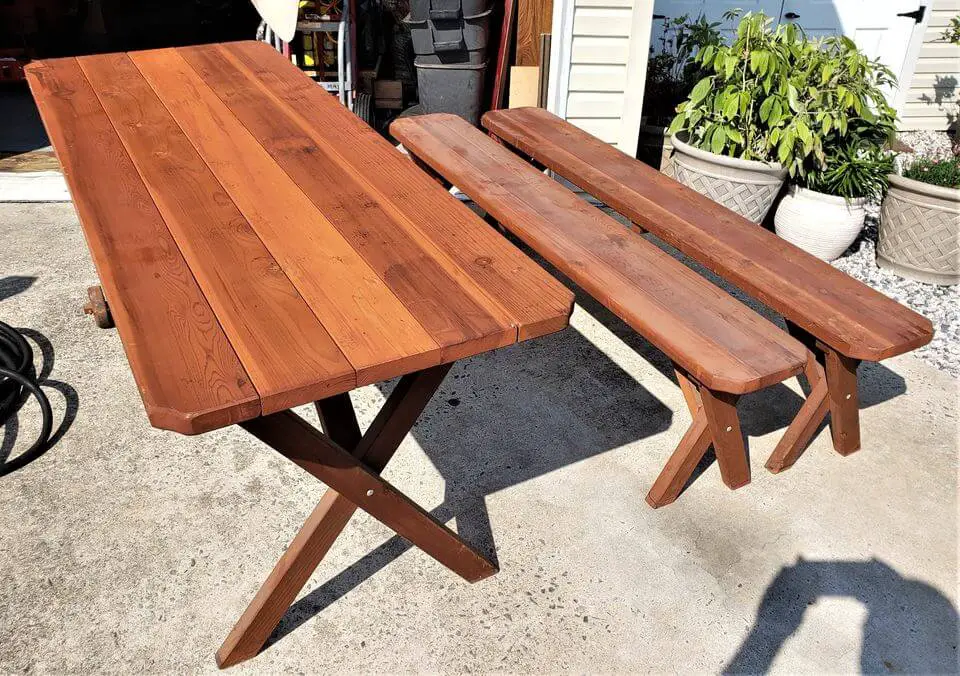
Redwood is costlier than most softwoods and can cost up to $10 per board.
Cedar
| Characteristic | Score |
|---|---|
| Strength | Fairly good. |
| Durability | Good |
| Rot and insect resistance | Good |
| Weather resistance | Good |
| Cost | More affordable than redwood |
Cedar can weigh up to 22.5 pounds per foot cubed. It’s stronger than most softwoods. It’s also more durable when compared to softwoods such as pine.
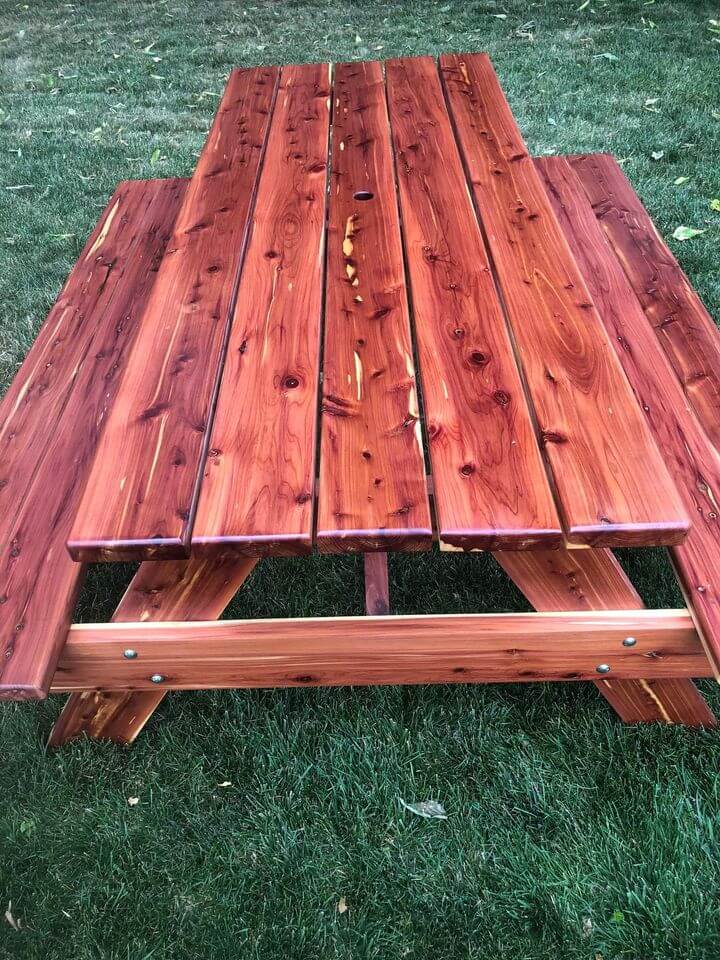
Many types of cedar wood contain natural resins that make them resistant to water. It can withstand outdoor weather without warping, sagging, or shrinking. This wood has air pockets that act as insulation. They protect it from temperature changes that could make the wood expand or warp.
It also has a pleasant fragrance that helps it to repel insects. Cedar is more affordable than all the woods listed above.
Outdoor Lumber Finishing Tips
Moisture, heat, sunlight, and insects are all elements that can damage your outdoor furniture.
Direct sunlight causes fading, while moisture causes wood to expand and eventually split. An attack from insects causes wood to start decaying.
Although the wood types mentioned above are naturally resistant to these elements, protecting your furniture is crucial.
Here are some tips to help you protect your outdoor furniture;
- The first step is sanding your furniture to ensure all surfaces are even.
- Next is applying a finish. You can either use paint or spar varnish.
Paint tends to block UV rays better than a clear finish. But if you want to maintain the natural color of wood, consider using a spar varnish.
Applying 2-3 coats of finish will offer your wood better protection.
- Seal your furniture. Ensure that all parts of your furniture, including the joints and the bottom of the legs, are sealed. Sealing extends the lifespan of wood by protecting it from dirt, water, and mold spores.
- Re–seal your wood every one to two years.
Conclusion
Since outdoor furniture adds to your home’s aesthetics, the wood you choose should attract the eyes. It should also have the ability to withstand outdoor weather. Some good examples of such wood are; teak, shores, cedar, redwood, and Ipe.
These woods are naturally resistant to water, rot, and insect infestation. But they need regular maintenance. Finishing them with either paint or varnish helps to enhance their appearance and protect them from elements such as UV rays.

